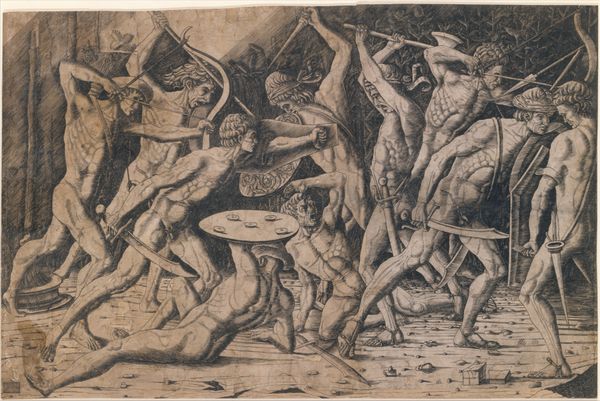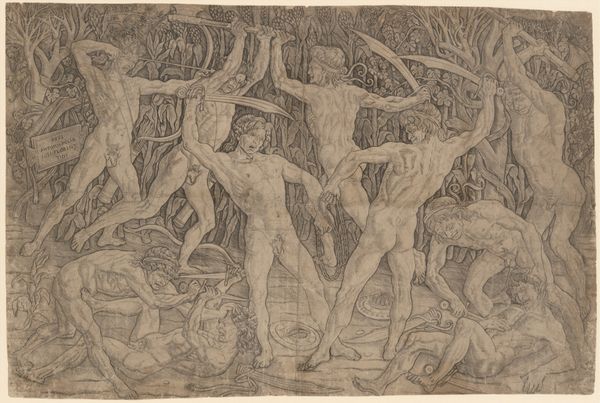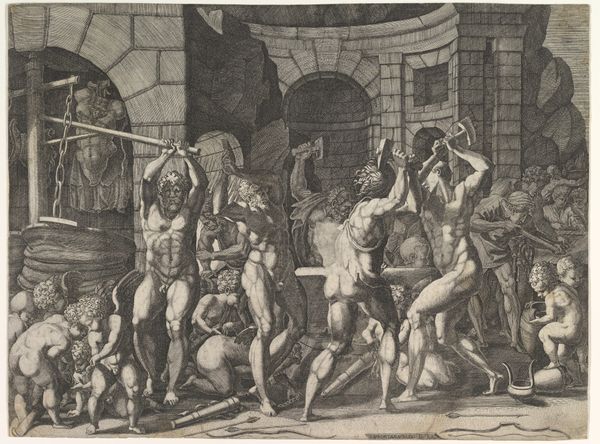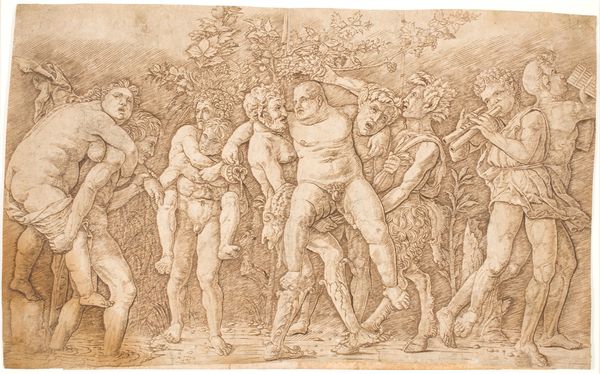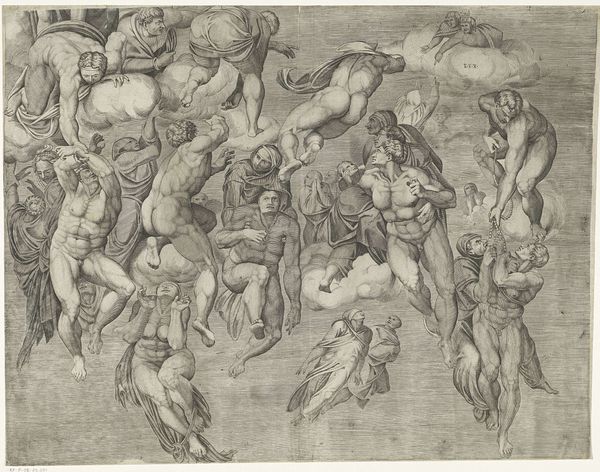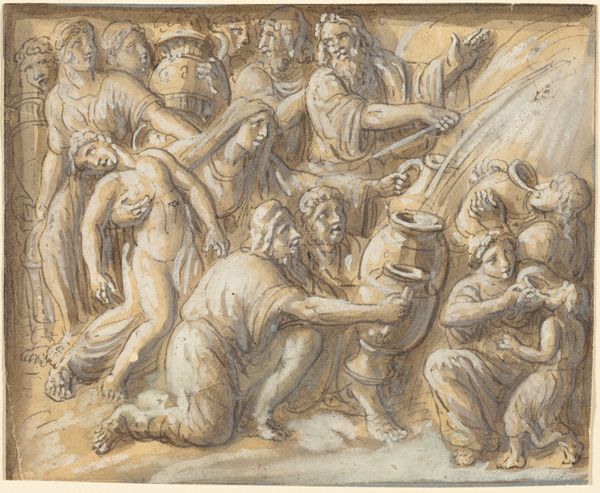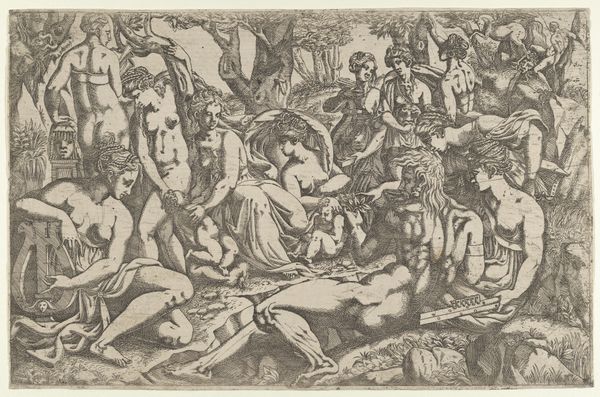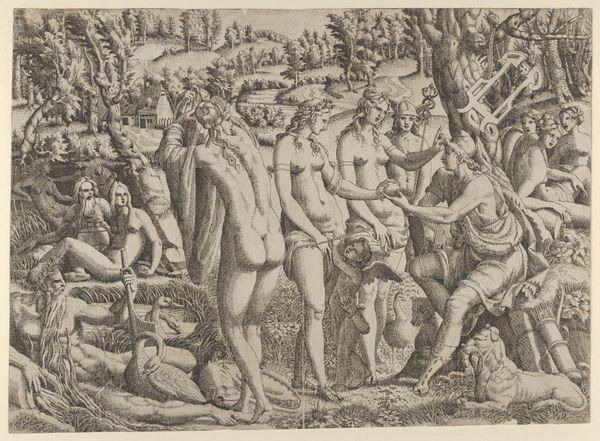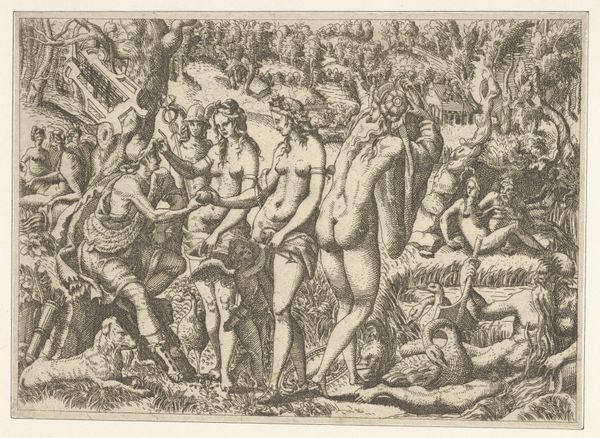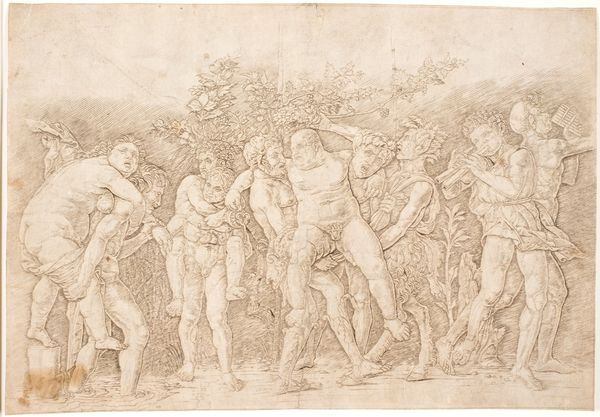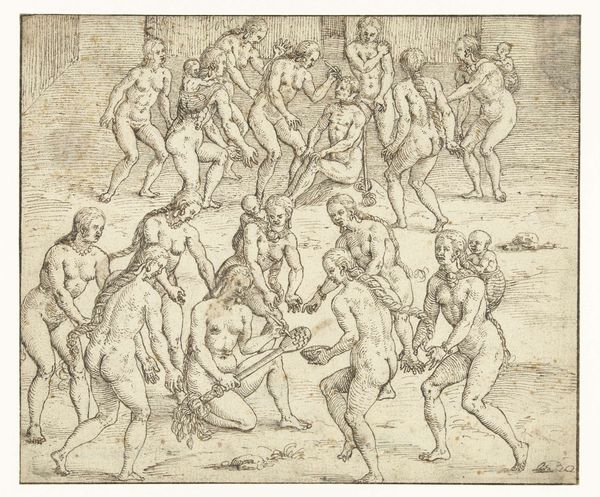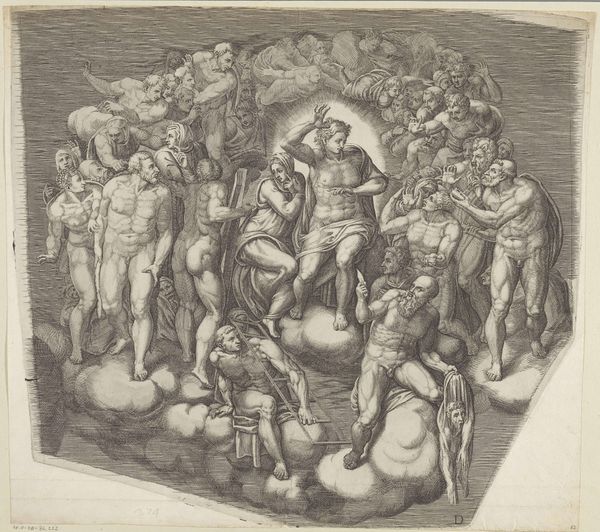
drawing, print, intaglio, ink, engraving
#
drawing
#
ink drawing
# print
#
intaglio
#
mannerism
#
figuration
#
11_renaissance
#
ink
#
history-painting
#
italian-renaissance
#
nude
#
engraving
Dimensions: Sheet (trimmed): 11 11/16 × 17 13/16 in. (29.7 × 45.3 cm)
Copyright: Public Domain
Curator: My first impression is chaos. Bodies intertwined, violent gestures... a brutal, overwhelming scene. Editor: Indeed. What we're observing is an engraving, an intaglio print, titled "Combat of Naked Men" by Jean Mignon. Created sometime between 1535 and 1555, it captures a frenzied conflict, a stark tableau of male bodies in motion and turmoil. Curator: There’s an almost dreamlike quality despite the violence. The contorted figures, the intense shading… it feels almost like a nightmare, but rendered with such technical precision. There are all these classical echoes but everything's deliberately… off. Editor: Precisely. This aligns with Mannerist aesthetics, a departure from the High Renaissance ideals of harmony and balance. Here, the human form is exaggerated, the composition dynamic to the point of discomfort. Consider the historical context: The Renaissance was crumbling under social and religious tension. Mignon's rendering can be interpreted as an allegory of the tumultuous state of European society, with conflicts around nascent capitalism. Curator: I wonder, too, about the iconography of the nude male form. While seemingly referencing classical ideals of heroism and strength, there's something unsettling about their vulnerability here. Stripped bare, are they meant to be seen as innocent victims, or something else? It appears he's asking "What remains once these signifiers are stripped away?" Editor: A compelling question. To me, the very act of depicting men devoid of clothing serves a symbolic function: To remove social rank. By showing only the bare skin of men fighting one another with nothing else covering it up, he shows that it's simply power which causes these clashes. The "Combat of Naked Men" transforms into an exploration of naked power. Curator: This discussion reminds us that even seemingly simple images can hold complex cultural significance. Jean Mignon manages to imbue "Combat of Naked Men" with layers of meaning about violence and the power which causes the friction between people, challenging us to delve deeper into the darker corners of Renaissance society and our shared psyches. Editor: It's been insightful to delve into the social conditions which brought this "Combat of Naked Men" into reality; understanding them allows us to further deconstruct its themes on contemporary society. It forces the questions: what about the painting transcends the boundaries of both space and time?
Comments
No comments
Be the first to comment and join the conversation on the ultimate creative platform.


